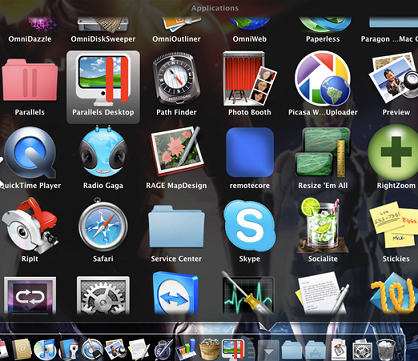With the growth of the graphical user interface in the mid-1990’s, the term skeuomorphism began to gain ground. It was probably a word unfamiliar to most of us, until Apple drastically cut it from its interfaces. Now skeuomorphism has become a strongly debated topic in web design circles. Is skeuomorphism dead, or is it necessary?
What is Skeuomorphism?
Skeuomorphism is the mimicry of real world objects in the digital space. This means things like making a push button on a screen resemble a button that exists on an appliance, or radio buttons that act exactly like those on a car’s dashboard. It also means things like a virtual notebook page that is “bound” by a ring in its margin, or a system dashboard gauge that mimics a real world speedometer. Skeuomorphism extends to surface textures (like the fake leather-looking background on that notebook), as well as gestures (“swiping” your reader to turn the page) and sounds (like that of an email blasting out of your iPhone.)

Gauges are round for a reason. In the real world, a gauge is a scale tied to an analog reaction to measure something. That is not nearly as complex as it sounds. Think about your old rotary thermostat (which you most likely just replaced with a digital model.) It had a needle on it that pointed to the temperature. That needle was hooked up to a metal spring that would expand and contract as the room got warmer or cooler. The designer of that gauge used that spring’s reaction to the temperature to build a scale that the needle could move along to tell the reader the temperature. In this case, form truly followed function.
Digital measurements do not need springs. That’s one of several arguments against the use of skeuomorphism. For example, it takes up a lot of space. There really is no need to use so much screen real estate just to mimic a temperature gauge, particularly when the effective use of text, font and colors could get the message across more clearly. Also, it is simply impossible to fully duplicate the behavior and functionality of physical objects in a virtual world – as a result, skeuomorphic designs are often half-baked and confusing, which defeats their purpose entirely.
Skeuomorphism Does Offer Application Benefits
However, there are also some good reasons to employ skeuomorphism, in moderation. Its real value is to provide the user with an immediate, inherent understanding of the function of an object in an interface. If I see a button on the screen, even if it is not a real mechanical button, I know that I can push it to get a result. Humans live in a physical world. We take clues for our behavior from physical objects. Maybe a desktop cluttered with icons depicting objects is too much, but a simple graphic of a push button or a gauge on a reporting dashboard are effective clues for the user of an unfamiliar interface.
Skeuomorphism is ever evolving. Professor Timothy Taylor has a fascinating discussion of the skeuomorphism of wine corks, tracing their evolution through three generations. It will be fascinating to see how the skeuomorphism asserts itself in the interfaces of 21st century users.

